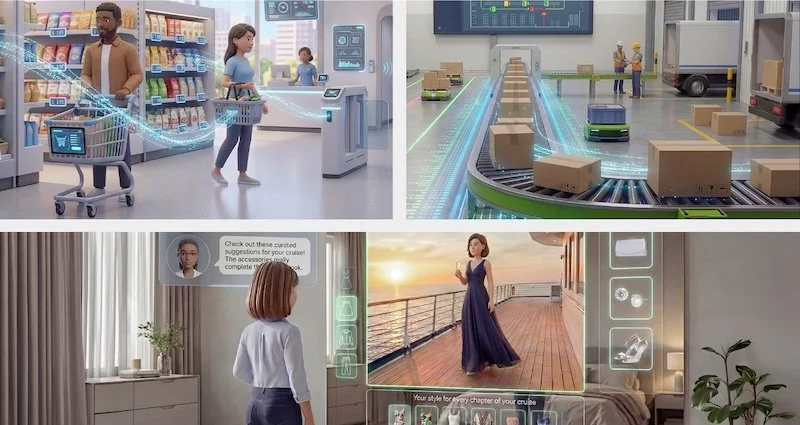Amazon teams with UVeye on new AI powered Automated Vehicle Inspection technology
Amazon has implemented a new artificial intelligence (AI)-based technology that, it claims, can spot even the smallest anomalies in delivery vans, from tyre deformities and undercarriage wear to bent or warped body pieces, before they become on-road problems.
The Automated Vehicle Inspection (AVI) tech is launching in partnership with startup UVeye in the US, Canada, Germany, and the UK.
“The last thing I want is for something preventable to happen, like a tyre blowing out because we missed an imperceptible defect during our morning inspection,” says Bennett Hart, owner of logistics company Hart Road. “This technology improves the safety of our fleet.”
“One exciting benefit of AVI is the totality of insights the technology gives fleet managers,” says Tom Chempananical, Global Fleet Director at Amazon Logistics.
“It can keep track of detected vehicle issues and see if they are repeatedly happening on particular routes."
At the end of every route, drivers drive through an AVI archway and over a series of plates equipped with sensors and cameras.
"When you go to the doctor, you expect to see a scan; we kind of do the same thing but for vehicles,” says Amir Hever, UVeye’s CEO.
With the vehicle rolling at 5 mph, the AI system performs a full vehicle scan in a few seconds, identifies problems, classifies them based on severity, and immediately sends the results to a computer.
From there, a DSP can determine the fixes and services they need to perform to have well-maintained vehicles on the road the next day.
AVI has already found hidden damage patterns. For example, 35% of all issues stem from tyres.
These issues include sidewall tears and debris and nails lodged in treads, issues not easily picked up by manual inspections previously. With AVI, DSPs will receive notifications to replace tyres before they turn into a bigger problem.
The analytics are run through Amazon Web Services (AWS), where the terabytes of vehicle images and data are processed and stored, using Amazon Simple Storage Service (Amazon S3), AWS Lambda, Amazon Elastic Compute Cloud (Amazon EC2), and other services.
The output is processed in less than one minute and shared via the API. Amazon has integrated the output into the existing DSP experience and shows fleet managers the detected issues along with photos and repair suggestions.
“This technology can become the new standard for vehicle inspection,” says Hever.
"Amazon always thinks about scale, and the fact that we’re now working with one of the biggest networks of fleets in the world is helping us grow. The partnership constantly reminds us of what we have built and how to make it work in hundreds of delivery stations, dealerships, and other locations.”
In the future, the technology could be used to support all sorts of delivery vehicles, from bikes to drones, and it could inspect not only the exterior, but also the interior of the vehicles.
“The potential for AVI applications is huge,” Chempananical says. “It could also influence Amazon’s routing and geolocation technology for when repeated vehicle damage is reported happening in the same location.”
















Continue reading…